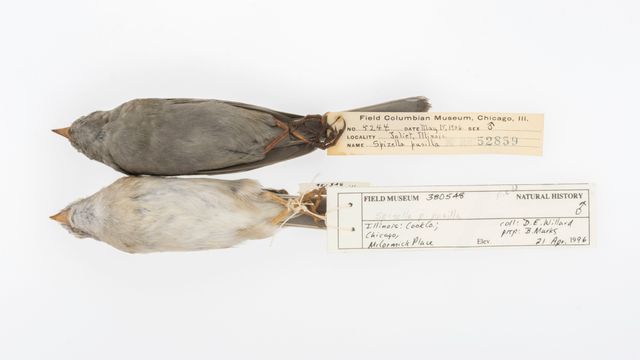Dirty old birds shed light on key global warming particle
Dirty old birds shed light on key global warming particle
Originally published October 9, 2017 at 12:01 pm Updated October 10, 2017 at 5:05 am

This image provided by Carl Fuldner and Shane DuBay show Field Sparrows, from 1906, top, and from 1996, bottom, that are in the The Field Museum collection. Scientists say more than 1,000 dirty stuffed old... (Carl Fuldner and Shane DuBay via AP)
By SETH BORENSTEIN
The Associated Press
WASHINGTON (AP) — Some dirty old birds are helping scientists better understand one of the more baffling climate change mysteries. ... University of Chicago researchers Shane DuBay and Carl Fuldner examined 1,347 dead birds in museums in Chicago, Detroit and Pittsburgh, comparing birds from the 1900s and 1910s to birds from decades later. ... The difference was black and white.
Feathers of birds in the 1900s were blacker than birds just 20 or 30 years later, suggesting that there was more soot in the atmosphere than scientists originally thought, according to a study published Monday in the Proceedings of the National Academy of Sciences.
This is important because scientists believe soot, also called black carbon, has an important role in climate change. They know it traps heat, but scientists haven’t been able to study it well because it doesn’t stay in the atmosphere long.
....
The black carbon coating the birds stuffed long ago now give scientists a better record, showing past pollution may have been underestimated, Fuldner and DuBay said. Black carbon emissions dropped around 1930 as homes turned away from coal for heat. Coal was used more and more for manufacturing and electric power, but that produces less soot than burning it in homes for heat, they said.
